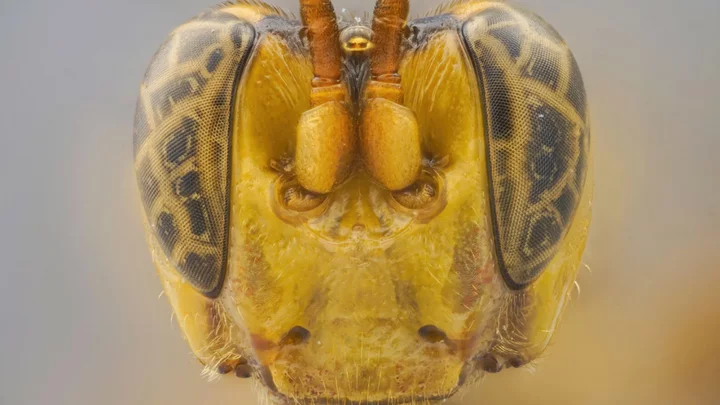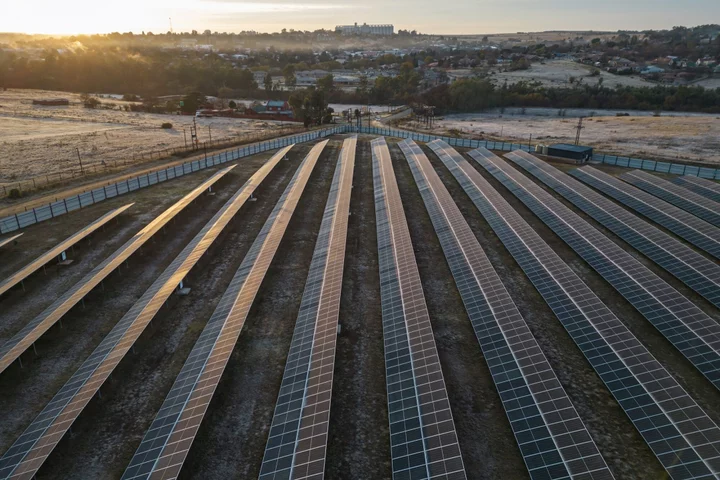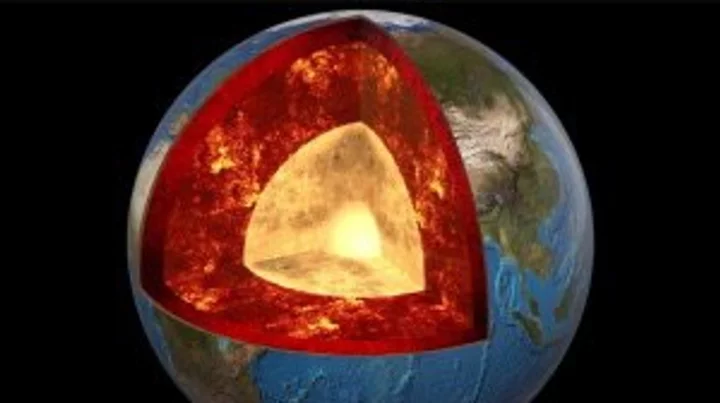
Nukefluencers Are On a Quest to Push Clean Power From Reactors
Let’s meet the newest generation of nuclear activists. There’s a Brazilian model. Miss America. A nonprofit founder who
2023-10-17 18:45

A parasitic wasp with a giant head has been discovered and it's the stuff of nightmares
Scientists have unearthed a new species of wasp in the Amazon – and it's rather terrifying. The alien-looking parasitic creature came to light when a team at Utah State University were researching Allpahuayo-Mishana National Reserve in Peru. The wasp, known as Capitojoppa amazonica, has a giant almond-shaped head and is known to latch on to prey before sucking its blood and then eating it from the inside. It does so by laying eggs in its victims including caterpillars, beetles and spiders. The study’s lead author, biologist Brandon Claridge called the practice a "solitary endoparasitoid". "Once the host is located and mounted, the female will frantically stroke it with her antennae," Claridge told Live Science in an email. "If acceptable, the female will deposit a single egg inside the host by piercing it with her ovipositor (a tube-like, egg-laying organ)." He went on to explain that in some instances, "females will even stab the host with the ovipositor and feed without laying an egg as it helps with gaining nutrients for egg maturation." This isn't the first horrifying discovery, with researchers recently finding a new species of tarantula in Thailand that is characterised with illuminous blue legs. The spider is one of the rarest in the world, with Dr Narin Chomphuphuang explaining how it lurks in hollow trees. "The difficulty of catching an electric-blue tarantula lies in the need to climb a tree and lure it out of a complex of hollows," he explained. "During our expedition, we walked in the evening and at night during low tide, managing to collect only two of them." Sign up for our free Indy100 weekly newsletter Have your say in our news democracy. Click the upvote icon at the top of the page to help raise this article through the indy100 rankings.
2023-10-17 18:23

South Africa Says It Can Raise $60 Billion for Its Transition to Green Energy
South Africa may be able to raise as much as 1.13 trillion rand ($60 billion) over the next
2023-10-17 17:55

Amazon to launch online shopping service in South Africa in 2024
JOHANNESBURG (Reuters) -U.S. ecommerce firm Amazon said on Tuesday it would launch its online shopping service in South Africa in
2023-10-17 16:59

Tesla to recall nearly 55,000 Model X vehicles, auto regulator says
The U.S. auto regulator on Tuesday said Tesla will recall 54,676 Model X vehicles manufactured between 2021-2023, as
2023-10-17 16:18

Scientists have discovered two giant mystery structures lurking under Africa
Many of us look to the stars for answers to life’s most complex questions. But actually, some of the greatest mysteries lie beneath our very feet. One might think we’d know the Earth pretty well by now but, in fact, our planet’s core remains shrouded in enigma. Indeed, there are two gigantic blobs located beneath Africa and the Pacific Ocean that occupy around six per cent of the world’s entire volume. And yet, we’re still not entirely sure what they’re made of or where they came from. There are a number of hypotheses, including that they are piles of oceanic crust that have accumulated over billions of years. Sign up for our free Indy100 weekly newsletter But a more interesting theory is that they are huge chunks of an ancient planet that hit the Earth around 4.5 billion years ago. To give an indication of just how massive these things are, the structure under Africa – an area known as Tuzo – is thought to be around 800km (497 miles) tall – the equivalent of some 90 Mount Everests stacked on top of one another, as IFLScience notes. The problem with determining the origin of these monster formations is that there are no direct ways of observing the Earth’s core. The deepest hole humans have ever dug – branded the "entrance to hell" – reached a pretty staggering 12,263m (40,230ft), but that doesn’t even come close to breaking through the crust to the layers beneath. Our most effective tool for analysing what lies beneath the ground is a technique called seismic tomography, which looks at how waves of energy travel when earthquakes occur. Since rocks and liquids have different densities, the waves move through them at different speeds. By measuring the tremors from different points on the surface, geologists can determine what kind of material the waves are travelling through and, in so doing, map out the Earth’s interior. It was by using this technique that the two unusual structures – known as large low shear velocity provinces (LLSVPs) – were found. Waves travel more slowly in these areas – fondly known as “blobs” – than through the surrounding lower mantle, indicating that they’re made of something different. We can’t tell what this material is based on seismic tomography data alone, but some scientists like to believe that they are the remnants of an ancient planet called Theia – an idea known as the “giant impact hypothesis”. According to this hypothesis, around 4.5 billion years ago, a Mars-sized object collided with the Earth. This impact not only created the planet we call home today, but also threw off enough rock to form the moon that lights up our night skies. Some scientists suggest that some of Theia’s leftovers also sunk to the bottom of the planet, probably settling somewhere above the core – thereby forming at least one of the two LLSVPs. More Updates About Strange Blob Structures Inside Planet Earth youtu.be Experts have been investigating the area for decades but there’s still no way of knowing for sure just what these two giant blobs are. Still, studies into Theia have offered important insights into how the possible collision might have kickstarted key plate tectonic and mantle motion inside our planet – crucial processes for establishing the world on which we live. It’s also a useful reminder that we still have so much to learn about our planet and where we came from. Have your say in our news democracy. Click the upvote icon at the top of the page to help raise this article through the indy100 rankings.
2023-10-17 14:56

Baidu says its AI is in the same league as GPT-4
Chinese tech giant Baidu is officially taking on GPT-4.
2023-10-17 14:15

This is why time ‘speeds up’ when we get older, according to scientists
We've all heard and probably have used the saying "time flies," but why does this expression resonate more and more as we get older? From being a happy-go-lucky child counting down the days of school left until the summer holidays to finding ourselves in adulthood with responsibilities like a full-time job and bills to pay, everything changes in what feels like a blink of an eye. While there isn't any scientific evidence that explains why we feel time moves faster as we age, there is a theory that may provide the answer. "One is that when we are older, we tend to have lives that are more structured around routines, and fewer of the big landmark events that we use to demarcate different epochs of the 'time of our lives,'" Cindy Lustig, a professor of psychology at the University of Michigan, told the Daily Mail. She explained how as children we have fewer experiences to reflect on. And so 20 per cent of a five-year-old's life is just one year and in this year there are momentous milestones and life experiences. While the same duration of time only two per cent of a 50-year-old's life who wouldn't have as many new experiences within this period. The professor added how our brains often merge similar days and weeks together and this blending of memories means that many of us can remember something they've done once rather than recalling the hundred times they have done it before. Well, there you go - something to think about whenever we feel old and like time is passing us by. Sign up to our free Indy100 weekly newsletter Have your say in our news democracy. Click the upvote icon at the top of the page to help raise this article through the indy100 rankings.
2023-10-17 14:15

Cryptoverse: Winter is coming as ether funds flounder in fall
By Lisa Pauline Mattackal The weak crypto market is wobbling through autumn. And winter's on its way. The
2023-10-17 13:51

The World Risks Focusing on the Wrong Things at COP28
Every year, the United Nations climate conference is gripped by major power rivalries over tiny terms. At COP27
2023-10-17 12:50

TSMC third-quarter profit to slide 30%, focus on how much growth to come
By Sarah Wu and Ben Blanchard TAIPEI Taiwan Semiconductor Manufacturing Co Ltd is expected to report a 30%
2023-10-17 11:50

China's Baidu unveils latest version of its Ernie AI model
BEIJING Baidu on Tuesday unveiled the newest version of its generative artificial intelligence (AI) model, Ernie 4.0. Ernie
2023-10-17 10:18
